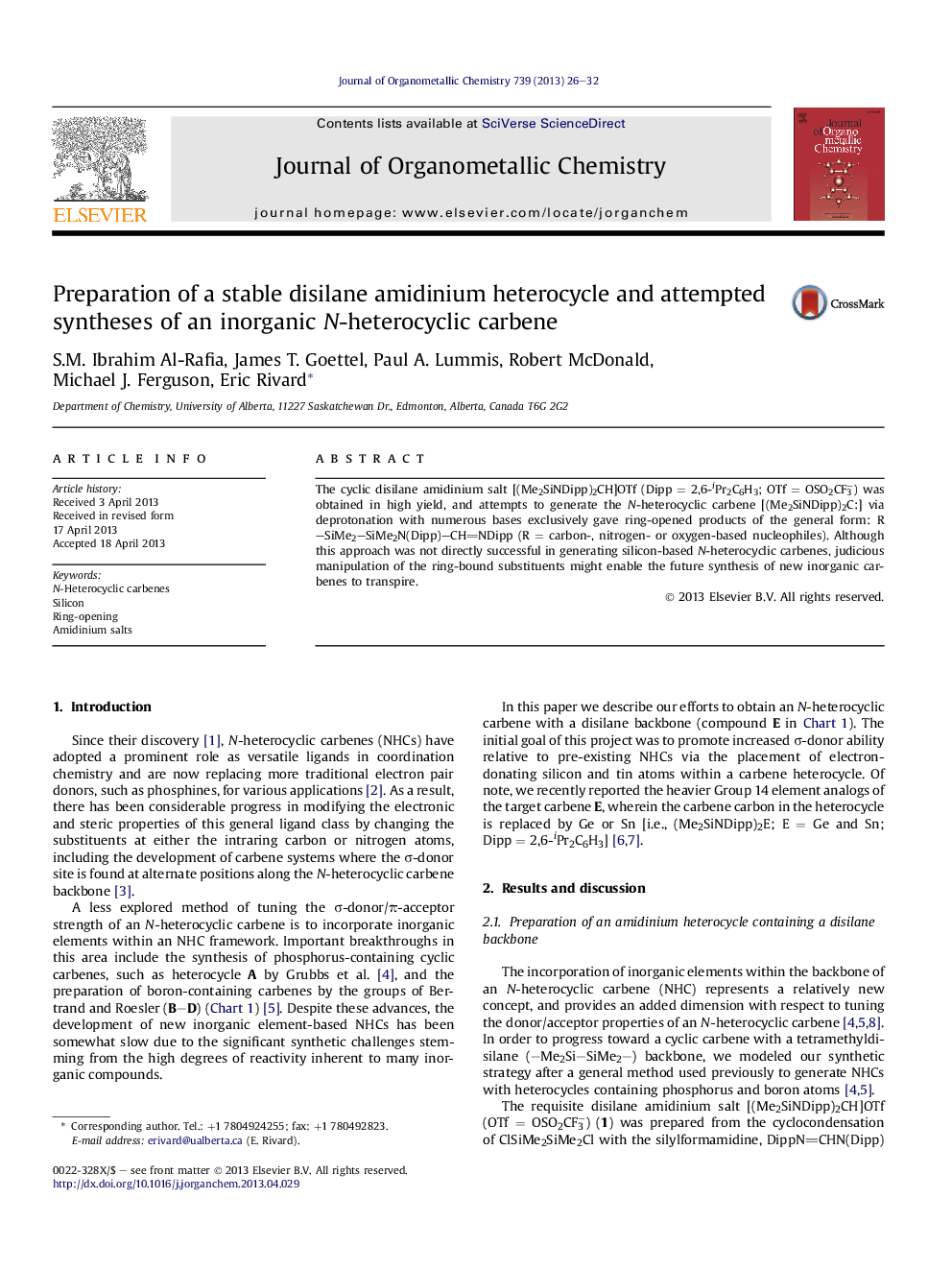| Article ID | Journal | Published Year | Pages | File Type |
|---|---|---|---|---|
| 1322682 | Journal of Organometallic Chemistry | 2013 | 7 Pages |
The cyclic disilane amidinium salt [(Me2SiNDipp)2CH]OTf (Dipp = 2,6-iPr2C6H3; OTf = OSO2CF3−) was obtained in high yield, and attempts to generate the N-heterocyclic carbene [(Me2SiNDipp)2C:] via deprotonation with numerous bases exclusively gave ring-opened products of the general form: R–SiMe2–SiMe2N(Dipp)–CHNDipp (R = carbon-, nitrogen- or oxygen-based nucleophiles). Although this approach was not directly successful in generating silicon-based N-heterocyclic carbenes, judicious manipulation of the ring-bound substituents might enable the future synthesis of new inorganic carbenes to transpire.
Graphical abstractA cyclic disilicon amidinium salt was obtained in high yield, and attempts to generate an N-heterocyclic carbene via deprotonation with numerous bases exclusively gave ring-opened products.Figure optionsDownload full-size imageDownload as PowerPoint slide
